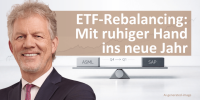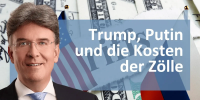For years, emerging markets have been touted as a great growth opportunity for investors, their superior returns boosting portfolio returns while lowering the overall risk profile through diversification. The reality has been more complicated due to the various crises that have overwhelmed the asset class over the past 30 years, most of which have resulted in substantial losses largely due to currency depreciation. The current strength of the US dollar combined with President Trump’s protectionist narrative appears to be creating the basis for another currency rout in emerging markets with both Argentina and Turkey seeing their currencies fall by more than 40% in 2018. Spillover into South Africa, Russia, Brazil and India is giving the impression of an asset class either in crisis or approaching one. From its 2018 peak in late January the emerging market benchmark has fallen just shy of 20% (using the total return index), so technically not a bear market. Had it been then it would have ended the bull market that started in 2016 making it the shortest in measurable history.
The obvious point being that the best time to buy into emerging markets is at times of crisis and if President Trump continues with his aggressive rhetoric in the run-up to the US mid-term elections then it is quite possible that he will have created a tremendous buying opportunity. Valuations are already attractive at below 1.6x price to book (P/B), the same level as early 2017, and the P/B discount to developed markets at 35% is close to the lows seen in 2015, which in turn were the lowest since 2004. Furthermore, the Schiller P/E ratio for emerging markets is now less than one third that of the US market, an extraordinary and historically high differential.
The issue then is not whether emerging markets are a buy but whether to persist with the growth style that has rewarded investors since 2011 or rotate back to value which massively outperformed in the bull market of 2001-08. The latter was driven by commodity prices which soared on the back of surging Chinese demand. A repeat of that scenario is inconceivable given the state of China’s finances although there may be some shorter-term measures to counter any impact from US tariffs. Growth stocks are expected to thrive when earnings growth is diminishing but although recently there has been some deterioration in the earnings outlook for emerging markets, the state of global growth, the level of global PMIs and the strength of Asian exports all suggest that global GDP is in good health. Consequently, although there have been some recent downward revisions to earnings estimates in emerging markets, expectations for one-year forward earnings per share growth remain in double digits.
Growth stocks are now trading at a premium to value stocks in terms of a P/E of 86% compared with less than 40% back in 2011. In terms of P/B the premium is 168% compared with just over 80% in 2011. Put another way growth stocks, despite the recent correction, are still close to their post-financial crisis highs while value stocks trade at a P/B just 20% higher than the lows of the financial crisis. This is exemplified by certain parts of the growth universe that are now egregiously expensive. For example, Indian consumer staples’ companies now trade on a forward P/E of over 40x which compares with a pre-financial crisis high of 27x. The Indian growth story is a good one, but these are very rich valuations. Similarly, the Korean healthcare sector now trades on a forward multiple of over 60x.
It would be logical to conclude that investors have decided to pay up for earnings growth in this uncertain world, but the reality is that the earnings performance of growth and value has been remarkably similar since 2011, implying that all the outperformance is the result of multiple expansion. The danger here is that any disappointment on earnings can lead to these names being de-rated, as has been witnessed recently among some of the leading Chinese technology companies.
The variable that remains disappointing is return on equity which has improved from the lows in 2015 but where there is still no premium to developed markets in spite of the higher cost of equity.
One driver that can help improve returns for both growth and income stocks is dividends. Cash flow is recovering largely due to greater capital discipline which in turn is reducing over-capacity and helping to restore margins. Despite this the pay-out ratio in emerging markets has remained stuck in the 35-40% range for the past 20 years. The increased focus on dividend payments by investors and management, with the notable exception of the technology sector, is likely to see this ratio increase. The resultant increase in leverage will push returns up and that should lead to higher ratings.
William Calvert, Lead Manager
Polar Capital Emerging Markets Income Fund
September 2018
09/25/2018
Swiss Fund & Finance Platform
Growth or value for an emerging market rally?
Important Information: This document is provided for the sole use of the intended recipient and is not a financial promotion. It shall not and does not constitute an offer or solicitation of an offer to make an investment into any fund managed by Polar Capital. It may not be reproduced in any form without the express permission of Polar Capital and is not intended for private investors. This document is only made available to professional clients and eligible counterparties. The law restricts distribution of this document in certain jurisdictions; therefore, it is the responsibility of the reader to inform themselves about and observe any such restrictions. It is the responsibility of any person/s in possession of this document to inform themselves of, and to observe, all applicable laws and regulations of any relevant jurisdiction. It is not designed to contain information material to an investor’s decision to invest in Polar Capital Funds Plc – Emerging Markets Income Fund. SUCH INFORMATION, INCLUDING RELEVANT RISK FACTORS, IS CONTAINED IN THE FUND’S OFFER DOCUMENT WHICH MUST BE READ BY ANY PROSPECTIVE INVESTOR.
Statements/Opinions/Views: All opinions and estimates constitute the best judgment of Polar Capital as of the date hereof, but are subject to change without notice, and do not necessarily represent the views of Polar Capital. This material does not constitute legal or accounting advice; readers should contact their legal and accounting professionals for such information. All sources are Polar Capital unless otherwise stated.
Third-party Data: Some information contained herein has been obtained from third party sources and has not been independently verified by Polar Capital. Neither Polar Capital nor any other party involved in or related to compiling, computing or creating the data makes any express or implied warranties or representations with respect to such data (or the results to be obtained by the use thereof), and all such parties hereby expressly disclaim all warranties of originality, accuracy, completeness, merchantability or fitness for a particular purpose with respect to any data contained herein.
Holdings: Portfolio data is “as at” the date indicated and should not be relied upon as a complete or current listing of the holdings (or top holdings) of the Fund. The holdings may represent only a small percentage of the aggregate portfolio holdings, are subject to change without notice, and may not represent current or future portfolio composition. Information on particular holdings may be withheld if it is in the Fund’s best interest to do so. It should not be assumed that recommendations made in future will be profitable or will equal performance of the securities in this document. A list of all recommendations made within the immediately preceding 12 months is available upon request. This document is not a recommendation to purchase or sell any particular security. It is designed to provide updated information to professional investors to enable them to monitor the Fund.
Benchmarks: The following benchmark index is used: MSCI Emerging Markets Index TR. This benchmark is generally considered to be representative of the Emerging Markets universe. This benchmark is a broad-based index which is used for comparative/illustrative purposes only and has been selected as it is well known and easily recognizable by investors. Please refer to www.mscibarra.com for further information on these indices. Comparisons to benchmarks have limitations as benchmarks’ volatility and other material characteristics that may differ from the fund. Security holdings, industry weightings and asset allocation made for the Fund may differ significantly from the benchmark. Accordingly, investment results and volatility of the fund may differ from those of the benchmark. The indices noted in this document are unmanaged, unavailable for direct investment, and are not subject to management fees, transaction costs or other types of expenses that the fund may incur. The performance of the indices reflects reinvestment of dividends and, where applicable, capital gain distributions. Therefore, investors should carefully consider these limitations and differences when evaluating the comparative benchmark data performance. Information
regarding indices is included merely to show general trends in the periods indicated and is not intended to imply that the fund was similar to the indices in composition or risk.
Regulatory Status: Polar Capital LLP is a limited liability partnership number OC314700. It is authorised and regulated by the UK Financial Conduct Authority (“FCA”) and is registered as an investment adviser with the US Securities & Exchange Commission (“SEC”). A list of members is open to inspection at the registered office, 16 Palace Street, London, SW1E 5JD. FCA authorised and regulated Investment Managers are expected to write to investors in funds they manage with details of any side letters they have entered into. The FCA considers a side letter to be an arrangement known to the investment manager which can reasonably be expected to provide one investor with more materially favourable rights, than those afforded to other investors. These rights may, for example, include enhanced redemption rights, capacity commitments or the provision of portfolio transparency information which are not generally available. The Fund and the Investment Manager are not aware of, or party to, any such arrangement whereby an investor has any preferential redemption rights. However, in exceptional circumstances, such as where an investor seeds a new fund or expresses a wish to invest in the Fund over time, certain investors have been or may be provided with portfolio transparency information and/or capacity commitments which are not generally available. Investors who have any questions concerning side letters or related arrangements should contact the Polar Capital Desk at the Administrator on (+353) 1 434 5007. The Fund is prepared to instruct the custodian of the Fund, upon request, to make available to investors portfolio custody position balance reports monthly in arrears.
Information Subject to Change: The information contained herein is subject to change, without notice, at the discretion of Polar Capital and Polar Capital does not undertake to revise or update this information in any way.
Forecasts: References to future returns are not promises or estimates of actual returns Polar Capital may achieve. Forecasts contained herein are for illustrative purposes only and does not constitute advice or a recommendation. Forecasts are based upon subjective estimates and assumptions about circumstances and events that have not and may not take place.
Performance/Investment Process/Risk: Performance is shown net of fees and expenses and includes the reinvestment of dividends and capital gain distributions. Factors affecting fund performance may include changes in market conditions (including currency risk) and interest rates and in response to other economic, political, or financial developments. The Fund’s investment policy allows for it to enter into derivatives contracts. Leverage may be generated through the use of such financial instruments and investors must be aware that the use of derivatives may expose the Fund to greater risks, including, but not limited to, unanticipated market developments and risks of illiquidity, and is not suitable for all investors. Those in possession of this document must read the Fund’s Prospectus for further information on the use of derivatives. Past performance is not a guide to or indicative of future results. Future returns are not guaranteed and a loss of principal may occur. Investments are not insured by the FDIC (or any other state or federal agency), or guaranteed by any bank, and may lose value. No investment process or strategy is free of risk and there is no guarantee that the investment process or strategy described herein will be profitable.
Allocations: The strategy allocation percentages set forth in this document are estimates and actual percentages may vary from time-to-time. The types of investments presented herein will not always have the same comparable risks and returns. Please see the private placement memorandum for a description of the investment allocations as well as the risks associated therewith. Please note that the Fund may elect to invest assets in different investment sectors from those depicted herein, which may entail additional and/or different risks. Performance of the Fund is dependent on the Investment Manager’s ability to identify and access appropriate investments, and balance assets to maximize return to the Fund while minimizing its risk. The actual investments in the Fund may or may not be the same or in the same proportion as those shown herein.
Country Specific disclaimers: In the United States the Fund shall only be available to or for the account of U.S. persons (as defined in Regulation S under the United States Securities Act of 1933, as amended (the "Securities Act")) who are "qualified purchasers" (as defined in the United States Investment Company Act of 1940, as amended (the "Company Act")) and "accredited investors" (as defined in Rule 501(a) under the Securities Act). The Fund is not, and will not be, registered under the Securities Act or the securities laws of any of the states of the United States and interests therein may not be offered, sold or delivered directly or indirectly into the United States, or to or for the account or benefit of any US person, except pursuant to an exemption from, or in a transaction not subject to, the registration requirements of such securities laws. The securities will be subject to restrictions on transferability and resale. The Fund will not be registered under the Company Act.




